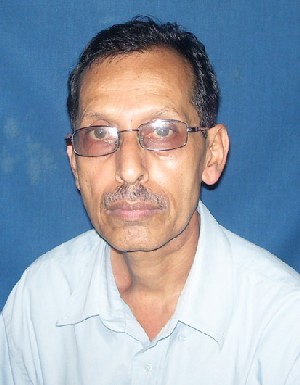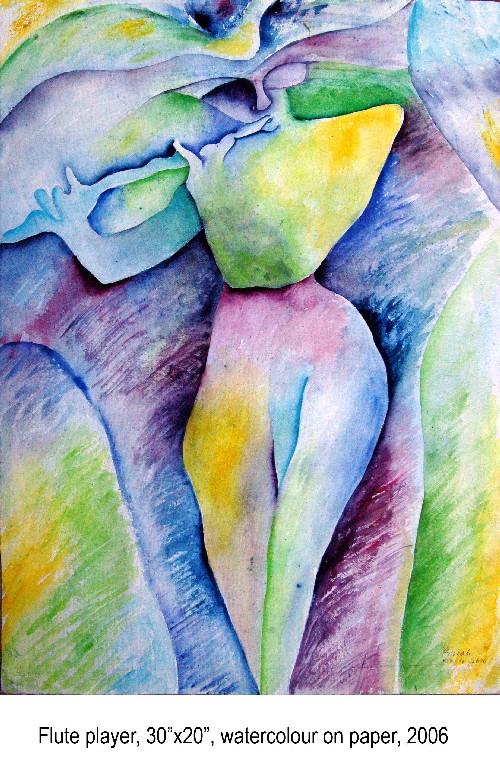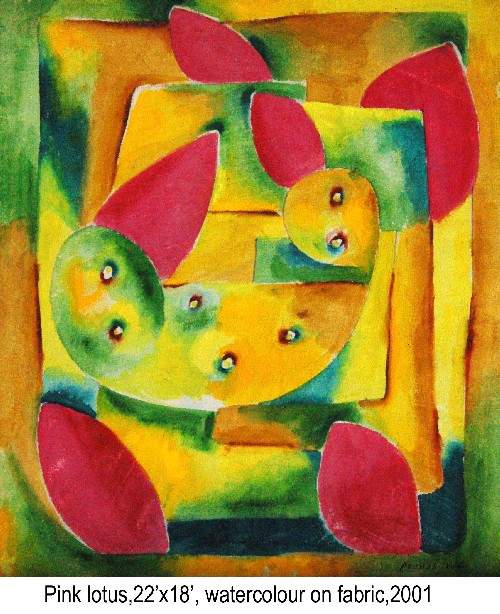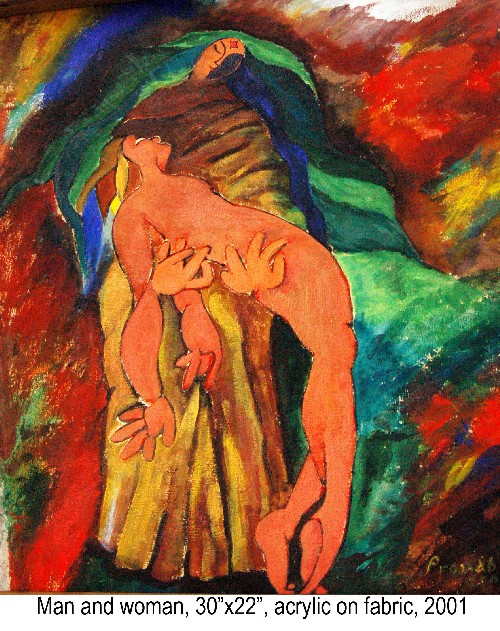The Assam Agricultural University, Jorhat (during my days there, there was only AAU, Jorhat) is known for many accomplishments by its students and faculty in the fields of agricultural and biological sciences. What perhaps unknown to most is the fact that many of its faculty and students, both past and present, are also well-known for their artistic and cultural contributions to Assam. A prime example is Dr. Lakshmi Nandan Bora, a literary genius and multiple literary award winner, who was a professor of the Meteorology department at the AAU, Jorhat during my tenure as student there (both undergraduate and post-graduate) in the mid- to late-80s (his daughter was my classmate and a friend).

Pronab Baruah
Pronabda, who still is a faculty member in the Agricultural Economics department at the Assam Agricultural University, was born to one of the “old” families in Jorhat with an ancestry that includes Lakshminath Bezboruah. Born in 1953 at Jorhat to Late Kamalananda Baruah and Makhani Baruah, Pronabda is the youngest of the four siblings. Pronabda grew up in a cultural environment - his grandmother was the famed author the Late Troilekeshwari Devi Baruani of “Sandhiar Sadhu” and “Sadhu Katha” fame. She was an avid gardener and young Pronab enjoyed spending time with his grandmother in their big yard. He credits his grandmother for the closeness he finds with nature which shows in his paintings (pic 2). The influence of music and dance is also clear in Pronabda’s paintings – he believes that dance is an excellent medium of expression and he thinks that growing up close to the Jorhat Music School (then run by Late Darpanath Sarma), where his sister went to learn violin was also a factor in his liking of music and dance as excellent forms of expression art (pic 3).

Pic3: Flute player
Pronabda’s artistic talents was recognized even at a very young age – even without any formal training, at the encouragement of his family, friends, and teachers, he started entering art local competitions since about 3rd grade (or Class 3) and started winning first prizes! The silver lining in his artistic journey came during his high school in 1968 when he bagged the first prize for his water color portrait of Lakshminath Bezbaruah. The State of Assam was celebrating the birth centenary of the great litérateur that year and it fit well that a descendent of the family won the first prize! Pronabda recalls that viewers of the art exhibition thronged before the portrait he drew and praised him for his work, little did they know that he had no formal training! It was then that he realized that his medium of expression through art is water color which is still his primary medium to this day. The jury of the art competition in 1968 asked him to pursue a career in the arts – which he did to a large extent, perhaps not to his fullest potential and not to his heart’s satisfaction.
As we all know, artists cannot survive on art alone! So, Pronabda pursued a career in agricultural economics and received his M.Sc. (agri.) in 1976 from the AAU. During his college days he was very active in promoting art awareness in the student community and not surprisingly, along with a few artist friends in Jorhat he founded the Jorhat Fine Arts Society which is still very active in promoting art and its value to the society. An art school under the auspices of the Jorhat Fine Arts Society was started at the same time and most of the courses it offered were offered at free of cost to the students. Today the Jorhat Fine Arts Society has its own building complete with an art gallery in the intersection Gar Ali and Na Ali (now M.G. Road) near Mithapukhuri Road in Jorhat (tel: 0376-2304583).
In 1980, the Jorhat Fine Arts Society invited the famous artist Late Pranab Baruah of Nagaon to conduct a workshop on oil painting. According to Pronabda, that workshop benefited him immensely because it was there that he learned the techniques of oil painting from a master in the medium. The late Pronab Baruah must have seen potential in Pronabda because he urged Pronabda to take up painting seriously, i.e., professionally, which was not possible for various reasons (and that is one of the life’s regrets that Pronabda has). Fortunately, the workshop also resulted in a lasting bond between the two artists – one established and one budding but both with identical names – and it lasted until the death of the former. Buoyed by encouragement, Pronabda entered the annual art exhibition organized by the State Cultural Affairs in 1983 and his entry was selected as one of the prized entries and bought at the exhibition. Being an artist, Pronabda used the proceeds of his art sale to see Rodin’s exhibits in Calcutta (Kolkata) with his artist friends and the famous poet and art critic Nilomoni Phukan. What a great way to spend hard earned money!!
Pronabda’s passion for his art spurred the Jorhat Fine Arts Society to organize his first solo show in 1983. In this exhibit, his paintings showed his fascination with nature and his inner vision was expressed in forms imbued with texture that best portrayed his emotions (pic 4). Pronabda followed his successful 1983 solo art exhibit with two joint exhibitions with an artist friend - one in the State Art Gallery in 1985 and the other one in 1986 at the AAU – both shows were well received by the art fraternity of Assam.

Pic 4: Pink lotus
In 1985, a handful of young Assamese painters formed a group called the Society of Contemporary Artists. This Society provided a platform for Pronabda to showcase his art to stalwarts of Indian modern art like late Bikash Bhattacharya, who appreciated Pronabda’s use of color. The meeting with this leading Indian artist was also another turning point of Pronabda’s artistic journey. A turning point in his personal life came in 1986 when he got married to Niharika, who was pursuing her Ph.D. in the life science department of Dibrugarh University at that time. Seeing her husband’s profound interest in painting, she encouraged him to go to Shantiniketan to get a degree in fine arts so that he could teach art and practice it as well – apparently Pronabda did not listen to his wife’s good advice and he still regrets that! Who knows what turn his life would have taken had he listened to his wife and pursued his dream! We will never know. With the birth of his twin daughters Pooja and Pia, Pronabda became aware of a new beginning in his life and used it as a source of inspiration for his art. He was delighted that his daughters had shown their father’s interest in art and culture and showed exceptional talent in drawing and painting at a very tender age. Pronabda’s wife, Niharika, quit her private sector job to devote her time to nurturing the talents of their daughters which were in dancing and singing. Both of them have excelled well Manipuri Classical dance. Their talent in drawing was also evident when they secured the highest position in fashion designing from the Apeejay Institute of Design and Management in Gurgaon.

Pic5: Man and woman
The late eighties saw him participating in some of the major art events held in Assam and in 1992 Pronabda was invited to showcase his work in the exhibition of four selected artists organized by the Kamrup Natya Samity in Bhaskar Art Gallery, Guwahati. Inaugurating the exhibition, poet of international repute and noted art critic Nilomoni Phukan said about Pronabda’s works that is his paintings have a rare visual quality and that he was spell bounded by the emotional quality, depth and richness of his colors and the boldness and curves of his lines (pic 5). Another art critic while reviewing his work wrote that "Pronab's paintings soothe a beholder's nerves. Lines, forms, colours are some fundamental tools to a painter while the role of texture is no less significant-can be observed in Barua's painting. The delicate use of colour, delineating forms through lines- all contribute to create a plastic quality to Pronab's paintings" (Eastern Clarion, April 1992).

Pic 6: Peacebird
The year 1992 was also an important year for Pronabda as he was selected for the Lalit Kala Fellowship in painting. Pronabda selected Bhubeneswar (site for one of the five Lalit Kala Centers in India) but unfortunately due to circumstances which were beyond his control, Pronabda was not able to complete his Fellowship at the Bhubeneswar Lalit Kala Centre. Although lady luck would not shower her good grace on him then and he was very disappointed, Pronabda did not give up. The artist in him always urged him to paint and he continued. His efforts were recognized by various organizations in the State. The Srimanta Sankardev Kalakhetra Society in Guwahati in 2005 invited him to participate in its 4-day painting workshop. In 2009, the Directorate of Cultural Affairs of Assam selected a major series by Pronabda tiled “Peace Bird” for its exhibition to commemorate the birth centenary of Kala Guru Bishnu Prasad Rabha. One of the paintings in this series includes an abstracted form of a bird walks through it all giving hope of peace and tranquility ahead (pic 6). That series of paintings was a reflection of Pronabda’s inner turmoil of as an artist who was suffering from the strife torn times we live in.
The parallel journey of Pronabda as an artist, as a family man, and as a faculty member at the AAU continues. As an artist he is in search of beauty which he finds in the nature. Sometime he breaks off from his mundane activities to embark on that special journey that provides memories and inspirations and returns with beautiful images for sustenance for a long time. As a family man, he finds solace in seeing his children succeed as artists. And as a teacher and a professional agricultural economists, he tries to impart the knowledge he has to the new generations and hopes that they get to pursue their dreams. And for some of us who had Pronabda as a teacher, we do appreciate his encouragement and wishes that he showered on us when we studied at the AAU. So, I want to end this story by saying this Pronabda – THANK YOU and WISH YOU THE BEST!
Written by Sanjib Bhuyan, Franklin Park, NJ 08823
- Log in to post comments